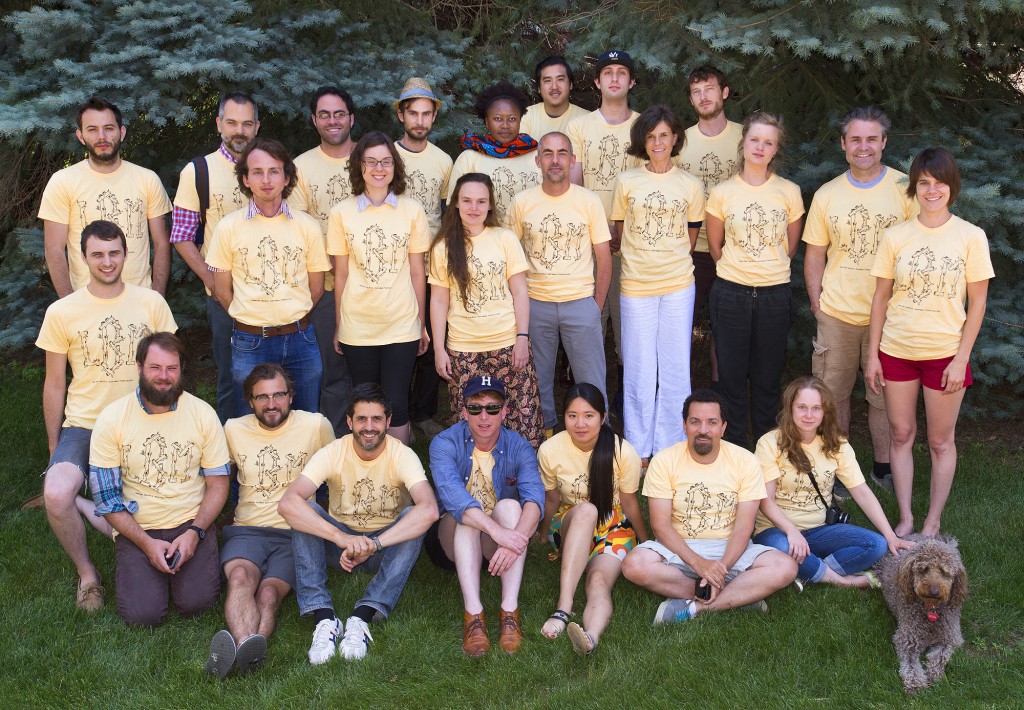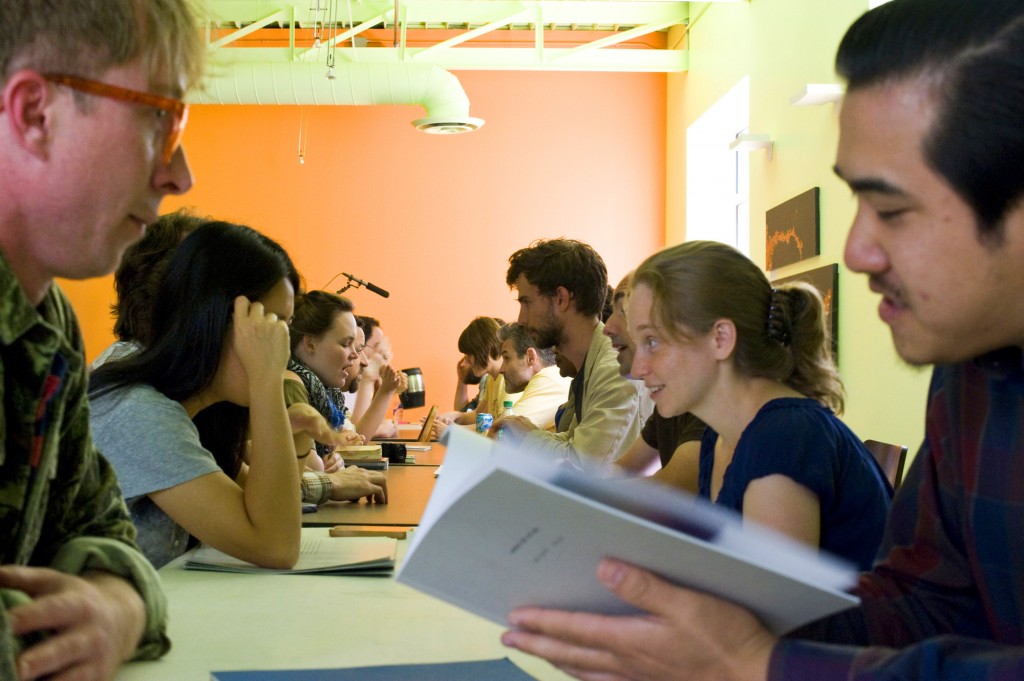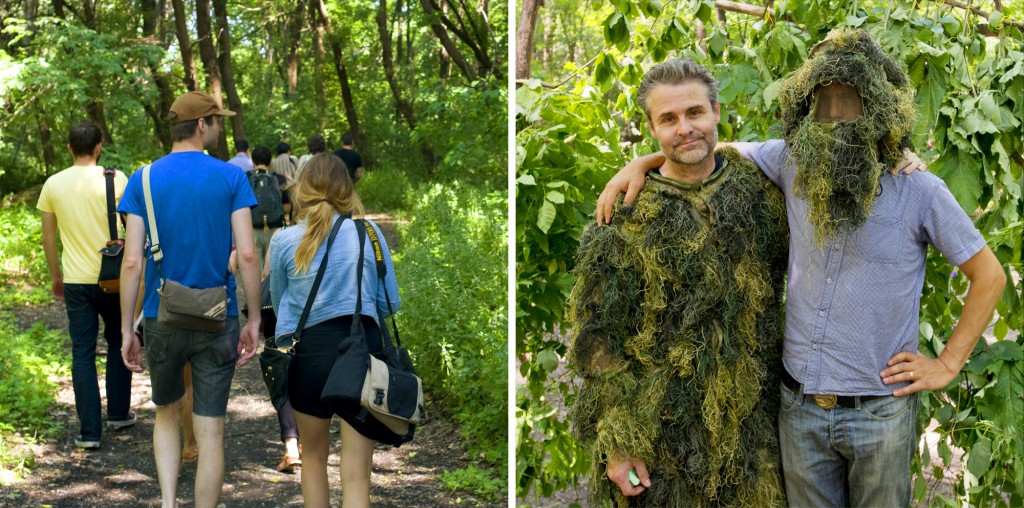The other day my daughter and I had a conversation about the event I was hosting at my studio, The Camp For Socially Awkward Storytellers. While she agreed that I’m something of an expert on social-awkwardness, she disputed the notion that I’m a storyteller. “You take pictures and put them into books,” she said, “but they aren’t really stories.”
Her words bruised a bit, but deep down I knew she was right. I know very little about storytelling. If anything, the camp was an elaborate con to get fifteen exceptional artists from around the world to travel to Minnesota to teach me about storytelling. Man, did it work. In five short days I learned more about the possibilities of visual storytelling than I’d probably learn in a year of grad school. But there was another lesson of equal importance: the value of having real encounters with real people in the real world.
I sometimes feel like I’m drowning in digital culture. More and more of my daily life is lived in a virtual space behind the screen of my computer. On Saturday night, this virtual space was turned inside out. Fifteen flesh and blood artists projected images onto a screen in front of a flesh and blood audience. The result was, in a word, alive.
In the last few weeks I’ve expanded my “social network” to include Instagram. As expected, I quickly became caught up in the Pavlovian ego-boost of the ‘like’ count. After Saturday night, I understand why screen actors return to the stage. The sound of people laughing and clapping means more than a million ‘likes.’
For the fourth time in 27 posts, George Saunders:
I began to understand art as a kind of black box the reader enters. He enters in one state of mind and exits in another… The writer… can put whatever he wants in there. What’s important is that something undeniable and nontrivial happens to the reader between entry and exit… The black box is meant to change us.
A ‘like’ is not a change. Nor is a thousand ‘likes.’ I believe virtual social networks have great creative potential, but it is almost impossible to quantify. Sometimes you just need to climb into the black box with other people.
I’m so grateful to everyone who climbed into that box with me last week. Along with thanking the Soap Factory and their amazing audience, I want to individually thank the camp participants:
Wenxin Zhang, Tara Wray, Caitlin Warner, Jim Reed, Diana Rangel, Bucky Miller, Colin Matthes, Adam Forrester, Brad Farwell, April Dobbins, Elaine Bleakney, Julian Bleecker, Jeff Barnett-Winsby, Horatio Baltz, Delaney Allen.
The visiting artists: Brian Beatty, David Sollie, Vince Leo.
Our interns: Yara Van der Velden, Kayla Huett, Phil Bologna.
And the LBM team: Brad Zellar, Carrie Thompson, Hans Seeger, Jason Polan, Ethan Jones, Galen Fletcher.
I truly feel changed.
Alec





this looks like so much fun. hope to join next time!
You left out the best part of the story: In what ways were you changed?
Yeah, I was pretty vague, wasn’t I? (I guess my daughter was right). Hopefully I’ll be able to verbalize things better in the weeks to come. My brain is still in the developer bath.
I look forward then to taking a peak when your brain has been fixed and dried. (Sadly, this clever metaphor has now become awkward).
Great to hear that you have broken free from the culture of ‘like’. I think I recognise one of the Magnum Postcards from America routes on the screen image. I was at Magnum in London the day before the agm, when Susan Meseilas was talking about these trips and the group deciding to purchase an RV instead of rentals.
Best wishes from England, Brian
I just read this article and am very interested in this event.
May I have the details of the camp? Meaning, who can come, how do I get involved in this?
I am a story teller, to children, and I enjoy it very much.
Not sure if I am even qualified to this.
thanks for whatever you can provide.
Pam Collins
Thanks for your interest Pam. Not sure if we’ll ever repeat this event. You can subscribe to this blog for future updates.